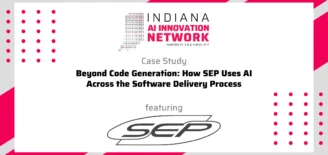Insights into startup funding through SBIR & STTR federal programs
Every year, government agencies award more than $2 billion in small business grants and contracts to entrepreneurs willing to take on research and development challenges that help solve problems and stimulate tech innovation. If your technology has the right potential for commercialization, there could be huge upsides in the form of incentives and profits by participating in the Small Business Innovation Research (SBIR) and Small Business Technology Transfer (STTR) programs.
This isn’t just for defense contractors, R&D opportunities in ag-tech, ed-tech, health-tech, clean-tech, transit-tech, security-tech, aero-space tech and more are part of the SBIR and STTR programs. (See the full list of participating agencies, inside Structure of Program and Definition of Acronyms document)
While it’s probably easier and faster for entrepreneurs with existing technologies to apply them to the specific needs outlined by the government and get startup funding, SBIR and STTR are also a great source of inspiration for entrepreneurs who are looking for an idea that is sure to have market demand. For example, the U.S. Department of Education is seeking applications for 2015 in the fields of distance learning and teacher evaluation. Indiana is practically the center of the education technology universe with pioneers like Ali Jafari and other ed-tech innovators like Orbis Education, Herff-Jones, CuriculumLoft, Courseload, Lesson.ly and Standard for Success to name just a few. It’s probable that the talent and knowledge base assembled at the aforementioned companies are perfect candidates for taking on the DOE’s SBIR challenges.
During TechPoint’s monthly New Economy New Rules breakfast event sponsored by Barnes & Thornburg and LightBound, five tech and startup leaders with first-hand knowledge of these federal grant and contract programs shared their experiences and tips for how to succeed in partnering with the government to fund their research and development and get their startups off the ground. The panelists included:

- Rich Boling, Vice-President, Techshot
- Dr. Polina Feldman, Spin Up Associate, Indiana University Research & Technology Corporation
- Kris Parmelee, President, Parmelee Consulting Group
- Matthew Tan Creti, Co-Founder and CEO, Sensorhound
- Ryan Metzing, Director, Indiana Aerospace & Defense Council (Ryan was also the Moderator)
WATCH VIDEO
Before you go exploring the SBIR/STTR website for RFPs, I stongly suggest you check out the list of participating agencies and the decision-making flow chart provided by panelist Kris Parmelee. Click over to her contributed article 2 charts every entrepreneur seeking startup funding should see for more information and download both documents.
Here is a list of wisdom nuggets I gleaned from the panel:
- The state of Indiana recently reinstated a funds matching program that matches SBIR/STTR federal dollars 50-cents on the dollar up to $50,000.
- All 5 panelists think SBIR/STTR are good programs that really do help entrepreneurs.
- Grants are more for open ended research that MAY lead to comercialization.
- Contracts are for specific needs (i.e. Navy needs a widget for a battleship).
- The U.S. military is the largest user of the SBIR/STTR programs
- The National Science Foundation is wide open as far as fields and topics.
- The National Institutes of Health is so hungry for innovation that they don’t really care what you’re working on, they want to know about it!
- SBIR/STTR are good ways to get your idea funded or to conduct research that leads to a commercialized idea.
- Don’t give up. Matt with Sensorhound applied for contracts with DARPA and the Army before getting approved by the National Science Foundation.
- If you already have a product and customers, this isn’t a good way to get go-to-market funds. These programs are highly focused on commercialization of new technologies.
- At their cores SBIR/STTR are economic development programs, NOT science for the sake of science.
- SBIR is a proving ground for your ideas (Phase I), it helps develop the idea to see if it could lead to innovation and commercialization.
- How much? Phase I is usually about $150,000 and Phase II is about $750,000. But both could be more.
- You cannot use SBIR/STTR money for marketing, legal or other operational costs.
- Every participating government agency has different dates and timelines, so check them all.
- You can only outsource up to 30% of the work on an SBIR/STTR project. YOU have to be the primary researcher.
- STTRs generally require a university partner.
- Once you build relationships with the government agencies, you have a higher likelihood of higher success rates for funding.
- Don’t just apply. Make contact with the agency, get to know them and understand the research challenge.


